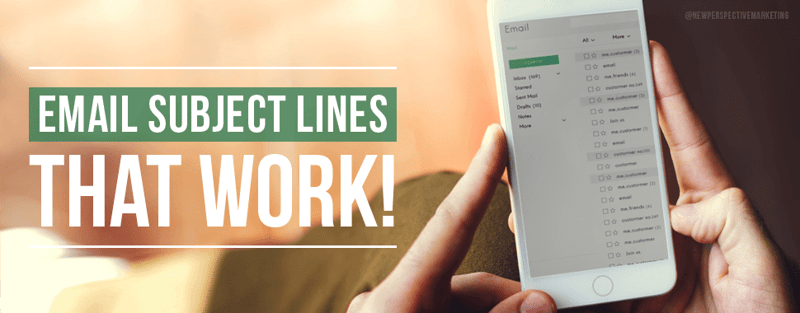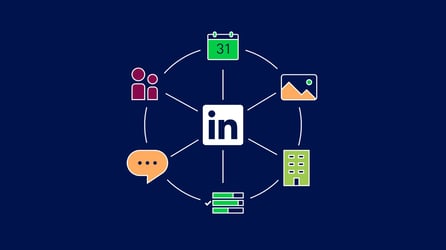Is Thank You Capitalized in an Email Subject Lines?

Your email lists consists of your current customers, prospective customers, and your fans. As such, it is vital that your audience opens and reads each email that you send to them. If you’re sending regular emails to your audience and they are not reading them, then you have a serious problem that needs to be addressed and remedied.
In this article, you will learn the importance of crafting awesome email subject lines that will get your emails opened time and time again.
Here's what we cover:
- Writing a good subject line is crucial to getting your email opened and read.
- You need to keep it short and to the point, reminding your audience who you are, and setting the tone for your content.
- Knowing your audience is vital, and personalising the subject line can increase open rates by 26%.
- Using power words can make a big difference, but don't use too many exclamation points or it will look like spam.
It’s important to remember that when your audience sees a new email from you, the first thing they are going to see is the subject line.
This presents your one and only opportunity to convince your audience that they absolutely need to open and read this email – RIGHT NOW! We’ve come up with some successful tips for you that will increase your email open rates.
5 Tips for writing great email subject lines
1. Keep it short and to the point
Numerous studies suggest that short and concise subject lines generate more curiosity and, subsequently, improve email open rates. The consensus is that your subject lines should be less than 50 characters and that you should focus on keeping them between 30 and 40 characters.
Some say that the subject lines should be even shorter, as in, less than 30 characters. We suggest you focus on the quality of the email subject and not an arbitrary number of characters. Another reason why you typically want to keep subject lines short is because you want the line to appear completely in your audiences’ browser window or email app.
2. Remind them who you are
It’s in your best interest to tell your audience who you are and remind them regularly. Adding a prefix to your email subject lines will serve as an excellent attention grabber, as well as a reminder to your audience about where the email is coming from.
For example, when emailing our customers about this new blog post, we might structure the subject line to look like this: {Company} Increase Your Email Open Rates Today! By the way, that subject line is 44 characters long. This subject line accomplishes 3 goals; it:
- Grabs your attention,
- Tells you who we are, and
- Tells you why we’re reaching out to you.
Consider adding a prefix to all of your emails, and tell your audience to look for that prefix. You’ll make yourself recognizable. You want your audience to easily distinguish your emails from everyone else.
3. Know your audience, and set the tone
It’s crucial that you know who your audience is before they are ever on your email lists. Remember, it’s all about your audience and how they interact with you, your business, and your content.
If your audience consists of computer programmers and creative types of people, then you can keep the subject line casual and include slang or buzzwords. If your audience consists of lawyers or other people with a serious demeanor, then you will want to be professional and concise.
Tailor your subject lines to your audience. This is also your chance to set the tone for your content. If you’re emailing them about a new piece of content that is hip or trendy, then you can express that in a casual way.
If you’re emailing them about a sale or another kind of promotion, then you can be loud and fun to convey a sense of urgency or excitement. Again, tailor it to your audience and don’t be afraid to experiment with this.
Using a consumer’s name in the subject line increases the open rates by 26%
4. Be personable
This point ties into the last one: A recent study discovered that using a consumer’s name in the subject line increased the open rates by 26 percent. Personalizing subject lines and/or email content requires that you collect subscribers’ first names when they opt into your email lists.
It also requires the use of short codes that vary between email marketing providers, but they typically look something like {firstname_fix}. Your own email marketing provider will have detailed instructions on how to do this.
Consider using personalization in your email marketing strategy. Sending subscribers relevant case studies or content offers will also make them a happy subscriber.
5. Subtle changes that make a big difference
A MailChimp study revealed that you should choose your words wisely when constructing email subject lines. For example, they discovered that the word “freebie” worked better than “free”. There are also a few “power words” that will increase email open rates, including:
- Urgent
- Breaking
- Important
- Announcement
- Invited/Invitation
- Thank You
However, be careful to not capitalize the entire subject line or use too many exclamation points. I know you might be excited about a new update you want your subscribers to read right away, but you have to get past their spam filters first. Put yourself in your customer’s shoes.
Give them something that will leave them wanting more. At the same time, don’t make it sound like spam or else they’ll just toss it in the trash or worse, unsubscribe. It’s amazing how just one or two words can make all the difference between emails that get read – and those that don’t.
The bottom line
It’s important to consistently craft compelling subject lines for your emails so that your audience reads them. In this article, you’ve learned how you can improve your email open rates by just focusing a little more on your email subject lines. Here’s a recap:
- Use less than 50 characters.
- Use a prefix to remind/tell them who you are.
- Consider personalizing the subject line with first names.
- Do not capitalize your entire subject line.
- Use power words to create interest.
Try these out on your email broadcasts over the next few weeks, and let us know how much your open rates have improved! Do you know someone who would benefit from reading this article? Like, Tweet, and share!
Looking for more B2B marketing help? Book a free meeting with one of our marketing experts to discuss your growth goals.




